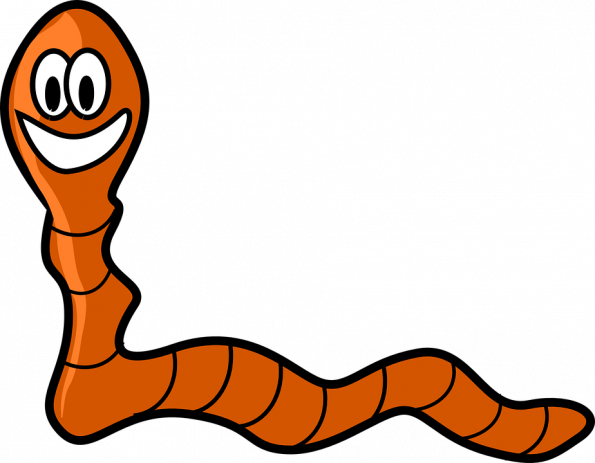
My cat has small white worms in his poop. They look like wiggling grains of rice. I tried some wormer medicine from the pet store, but the worms just came back. Thanks for your help!
There are two types of intestinal worms found in a pet’s feces that can be readily seen with the naked eye. The first is the roundworm, which is long, round and skinny like a spaghetti noodle. What you are describing is typical of the tapeworm, most commonly the Dipylidium caninum species of tapeworm.
Tapeworms are actually long worms, as well – growing up to 8 inches in length. They live in the small intestine of dogs and cats and attach to the wall of the intestine with hook-like mouthparts. Once the tapeworm has anchored itself, a long tail begins to grow. The tail is made of small, individual segments that each contains a complete digestive and reproductive system.
As the tapeworm grows, the older tail segments get pushed farther away from the head and lose their digestive system, but retain their reproductive tract. Eventually the end segment breaks off of the tail and is passed out through the pet’s rectum. At this point, the segment is nothing more than a sack of tapeworm eggs.
These segments are small, like the grain of rice you describe. There can also be multiple connected segments that are passed at one time, which can sometimes be mistaken for the roundworm. But if you look closely, you should notice that the worm is flat and segmented, unlike the round, smooth roundworm. When they dry, the tapeworm segments bear a resemblance to sesame seeds.
The passed tapeworm segments are typically found around a pet’s rear end or in their stool. They may also be seen in the bedding or other places your cat frequently rests, since the worms can pass while your pet is asleep.
If your cat (or dog) happens to swallow these tapeworm segments, he will not become further infested with tapeworms. Dipylidium caninum requires a flea to complete its life cycle. In other words, a flea larva found on your pet or in his bedding must eat the egg inside of the passed tapeworm segment. As the flea develops into an adult, the tapeworm is also growing inside of the flea. A pet must then in turn ingest that flea to become infected with tapeworms. Inadvertent swallowing of fleas when a cat or dog is licking and chewing its skin in response to a flea bite is not uncommon.
Although the tapeworm lifecycle may seem complicated, a simple conclusion can be made about your cat with tapeworms: even if you do not see fleas on him, your cat must be grooming off and ingesting fleas in order to become infested with the Dipylidium caninum tapeworm.
Therefore, treatment of tapeworms is two-fold. The first step is treatment of the tapeworms themselves. There are several very effective medications that can be given to kill the tapeworms. But without strict flea control, your pet is at high risk to develop additional tapeworm infestations. In as little as three weeks after treatment, new tapeworm segments can appear if your cat keeps swallowing fleas.
So the second, crucial part of tapeworm treatment is flea control.Excellent, veterinary-recommended flea preventatives that are administered to your pet once every month (or every 3 months for some products) are available. Successful flea control includes treating your ALL your pets year-round. Even one untreated pet will serve as a constant food source and allow new fleas to develop.
There are several other species of tapeworms that can be found in cats that eat infected rabbits, rats, mice or other rodents. Tapeworm medications are also effective against these different types of tapeworms. However, if you cat continues to ingest these prey, reinfection can occur. These types of tapeworms are less commonly seen than the flea-associated worms.
If your cat is not an avid hunter and you are having a problem with recurrent tapeworms, it is time to take a hard look at your flea prevention effectiveness. Ask your veterinarian for help in selecting the best protocol to eliminate your cat’s tapeworm and flea infestations. Remember that flea control is the mainstay of successful tapeworm treatment.
